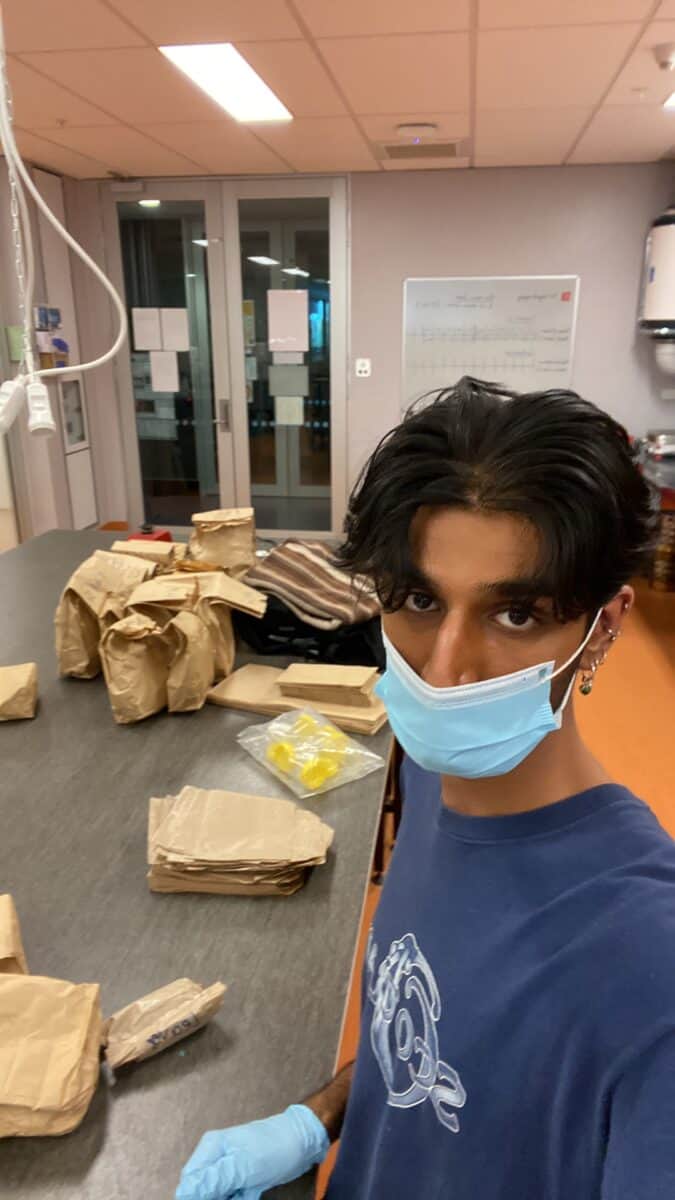On holiday in Transylvania, Isaar met with BioHeritage writer Kerry Donovan Brown via video call. Earlier in the day, Isaar had visited Bran Castle, a fortress known otherwise as “Dracula’s Castle”.
If entering the domain of an infamous baddie is hair-raising for the average tourist, for Isaar, it’s business as usual. Beginning his research career, Isaar cut his teeth investigating another organism that causes wasting disease in its victims: not in Victorian high society, but in our rākau rangatira.
Isaar started life in England, moving with his family to Tamaki Mākaurau when he was six. There, he developed a connection with forests and nature which led him to eventually study environmental sciences at the University of Auckland.

While earning his Honours through the Risk Assessment & Ecosystem Impacts theme within Ngā Rākau Taketake, Isaar’s supervisor Luitgard Schwendenmann put him in touch with Ngā Pī Ka Rere, Bioheritage’s early careers network, and he began attending their meetings.
Isaar says the issue of Kauri dieback is complex, with many overlapping lines of inquiry for researchers to explore. Connecting with Ngā Pī Ka Rere helped him understand these complexities.
“Talking to researchers who were looking into similar things was really cool,” he says. “Hearing about other people’s research helped broaden the scope of what I was thinking about in my own.”

Isaar’s First Class Honours thesis is titled: Effect of Kauri Dieback on Leaf Litter Nutrient Concentrations.
“I researched the leaf litter nutrients, and how they impact or change depending on PA’s presence,” he says.
“Kauri have a very unique forest floor environment. Because leaf litter is a unique component of the soil, understanding PA’s influence there is key in understanding the pathogen’s impact on the broader forest ecosystems.”
Isaar visited study sites, and collected samples from the top layer of the soil, which included leaf litter, twigs, and the reproductive parts of plants.
Back at the lab, Isaar separated the collected samples into trays by species: predominately broadleaf and fern species, and of course, kauri. Grinding the leaves into a fine powder, he then weighed out small amounts. These samples were then analysed for nutrient concentrations, like carbon and nitrogen, using an elemental analyser.
“It was a long process but it was enjoyable!” says Isaar.
“Something that really interested me throughout my research is the linkages between all the different parts of the forest: the nutrient exchange between the soil through the roots into the tree and the leaves, and then back to the soil,” says Isaar.
The Ngā Pī Ka Rere grant is supporting Isaar to reanalyse his data and rework his dissertation into a publication.
“I’m really grateful for the grant and support from the Ngā Pi Ka Rere team to publish my manuscript,” says Isaar.
Kerry Donovan Brown
